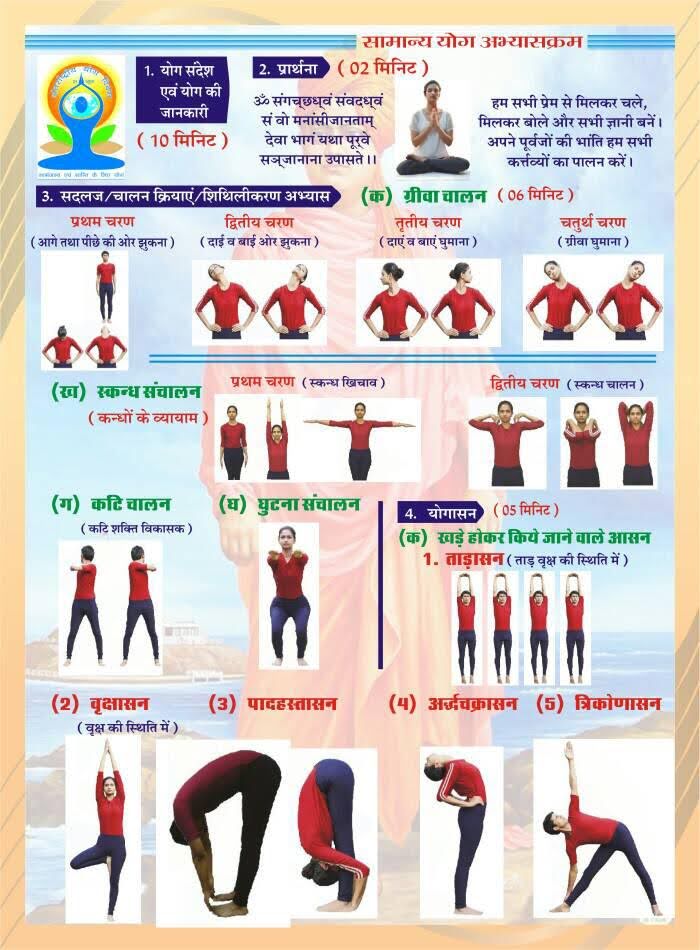|
Balance of body, mind and prana are essentials for physical and mental health. Regular specific asanas and moderate diet make this possible. In present time, when people running to meet deadlines, tension is imminent. A few asanas are discussed here which are extremely useful for sense of balance, steadiness of mind, breath balancing etc.
For balancing of body, increasing metabolic rate & eliminating toxins – In starting breathe normally, when elevate body breathe deeply. Awareness maintained in the final pose. These asanas should be done at the end of asanas. People suffering from high BP, heart ailment, hernia or peptic or duodenal ulcers should not attempt.
For sense of balance, steadiness of mind and sooths tension –
For breath balancing:
For Balancing emotions: - For dissolving Anger – Shashankasana For Balancing various systems in the body (Surya Namaskara): - Surya Namaskara is not categorised as asanas or yoga. Its twelve physical postures correspond to zodiac signs. The physical postures are synchronized with breathing, specific seed (bija) mantras, and awareness. The twelve physical postures are
Surya Namaskara should be practiced before doing other asanas, preferably at the time of sunrise. In day time, it should be done after a gap of at least three hours after meals. It should not be done at the time of sleep. To start with, two-three rounds can be done. It loosens up the entire body, eliminates toxins from the body and balances various systems in the body such as digestive system, circulatory system, respiratory system, endocrine system, eliminative system etc. Reference: A systematic Course in the Ancient Tantric Techniques of Yoga and Kriya – by Swami Satyananda Saraswati
0 Comments
Leave a Reply. |
Archives
July 2024
Categories |

 RSS Feed
RSS Feed